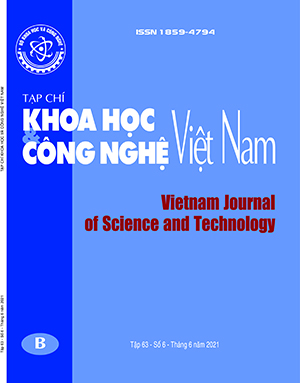Cloning, expression, and purification of chaperone AcrH from Aeromonas hydrophila using Escherichia coli host cells.
Abstract
Aeromonas hydrophila (A. hydrophila) is a gram-negative bacterium, using the type III secretion system (T3SS). In the T3SS, a key structure is a translocon that inserts into the target membrane and forms a channel for bacterial toxins into the host cell. A. hydrophila is pathogenic to different organisms, including humans and aquatic animals (especially domestic animals with high economic value in Vietnam and the world, such as fishes, shrimps, amphibians). The pore completes the channel from bacteria to host, is composed of a major translocator (AopB) and minor translocator (AopD). These translocators are bound by a small chaperone (AcrH) in bacterial cytosol. AcrH chaperone plays an important role in keeping the high stability of translocators and prevents nonspecific interactions of hydrophobic domains before the pore formed in the host cell membrane. Previous studies only analysed the structure of the AcrH in combination with the AopB, but in a non-binding form with the AopB has not been elucidated. That limits the understanding of the formation mechanism of T3SS. Therefore, the authors aimed to clone, express, and purify the AcrH recombinant protein which can be used for the structural study and elucidation of T3SS pore formation. In this study, the authors cloned a fragment of the gene encoding for AcrH chaperone from A. hydrophila and inserted the gene into the pET-28a expression vector. AcrH protein from amino acids 21 to 158 was expressed in E. coli BL21 (DE3) and purified using a nickel bead column with high purity (over 99%). As a result, the obtained AcrH protein can be used for studies of structure and function that contribute to perfecting the pathogenesis of gram-negative bacteria and developing research on the treatment mechanism caused by these bacteria.

